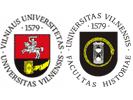The genesis of the Lithuanian neologism „savilaida“ has not been studied by the science of history, though such studies would allow reasonable answering to the questions of expedience of the usage of the term and uniqueness of its object. The article aims at analyzing the history of the origin of the Lithuanian term of „savilaida“ and its genesis in the soviet society.
The spread of samizdat neologism in the soviet society was a complicated historical process, determined by a number of external and internal factors. In the 40’s the coinage of „samizdat“ by Moscow poet N. Glazkov promptly spread among the cultural sets of Russia, whereas in the second half of the 50’s it reached a part of Lithuanian intellectuals mostly through relations with the Russian creative intelligentsia. At the meeting point of the 60’s and 70’s neologism „samizdat“ became wider known in Lithuania through the circulation of the Russian samizdat and a growing number of broadcasts of the Western radio stations, which provided such material. At the beginning it referred to the Russian samizdat, however at the start of the 70’s the concept of „samizdat“ included the Lithuanian underground press as well.
With the growth of samizdat and intensification of its influence in the society, in the first half of the 70’s the Lithuanian term „savilaida“, which, above all, described the particularity of production and spread of the underground press, was coined. The term got wider known in Lithuania after finding its way to the West, from where this neologism reached Lithuania through the broadcasts of radio stations and the emigration press. In the second half of the 70’s this neologism got widely known in the Lithuanian samizdat, yet was not used on a mass scale within the entire soviet period due to various circumstances.
The term „savilaida“ was not widely used in Soviet Lithuania due to a few reasons. First, the underground press was quite often construed as continuation of the partisan struggle of 1944–1953 or even the traditions of „knygnešiai“ (lith. book smugglers) of the 19th century. A part of press publishers, multipliers, distributors contributed to the partisan press or came in contact with it in 1944–1953, therefore the entire press circumventing the soviet censorship and published without the knowledge of the authorities was generally referred to as the „underground press“. Second, the term „savilaida“ is a word-for-word translation of the Russian term, a linguistic „loan-translation“, thus deliberate avoidance of the usage of this neologism was preconditioned by the resistance against the soviet system and its actively executed Russicism. Frequent use of the new term in the underground was also blocked by the sense of self-defence.
Adaptation of the neologism in Soviet Lithuania demonstrated the emerging need to name the new phenomenon of the underground press, which was attached greater and greater importance in the society. Therefore, regardless of the linguistic aspects (the term „savilaida“ is a verbatim translation from another language; furthermore, the number of neologisms with the component „savi-“, which are to be avoided in linguistic terms, keeps growing), the usage of the term of samizdat in Lithuania has the traditions of nearly half a century, and its use in the scientific discourse is historically reasoned. |


 dizainas ir programavimas giriaus
dizainas ir programavimas giriaus  dizainas ir programavimas giriaus
dizainas ir programavimas giriaus